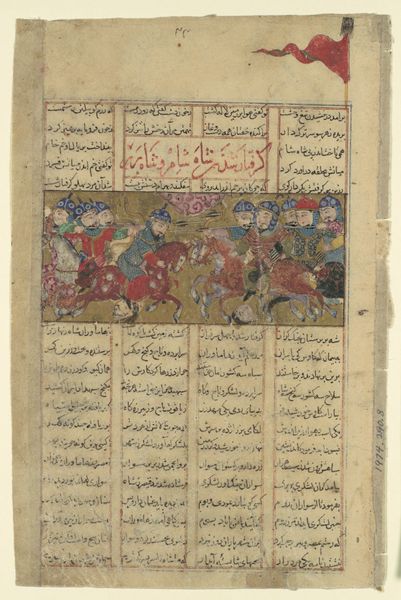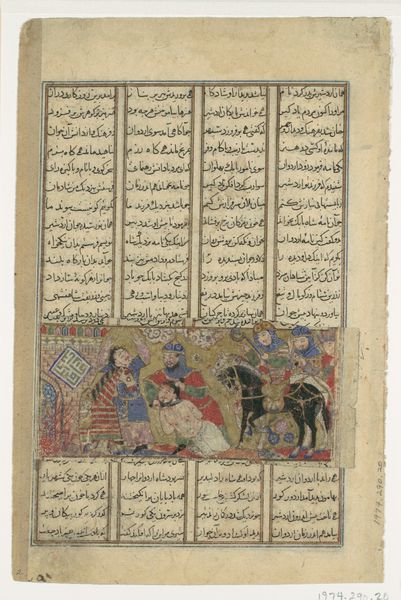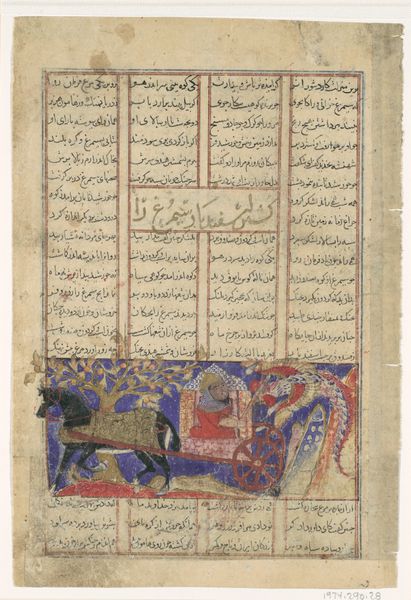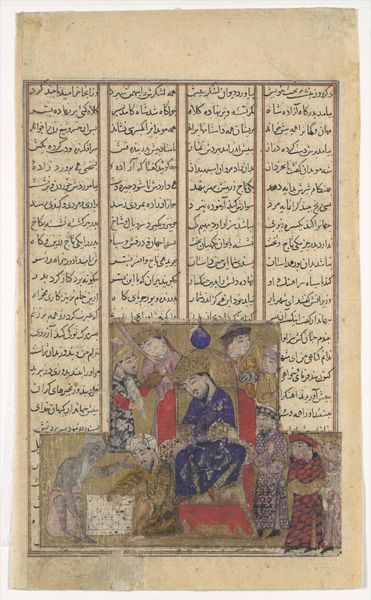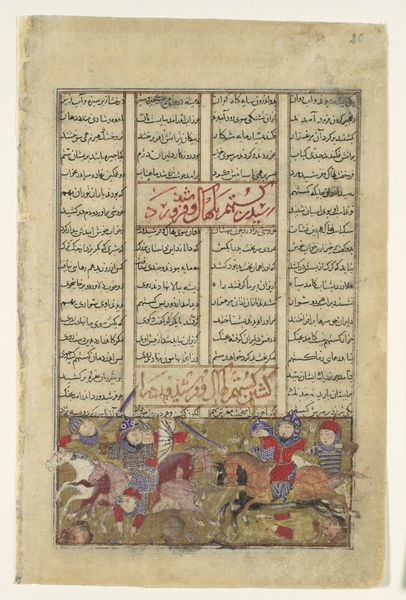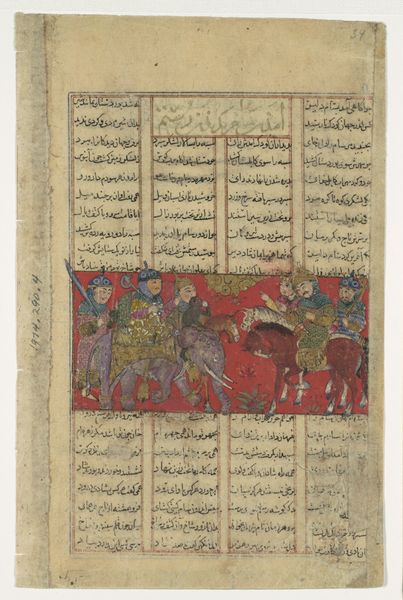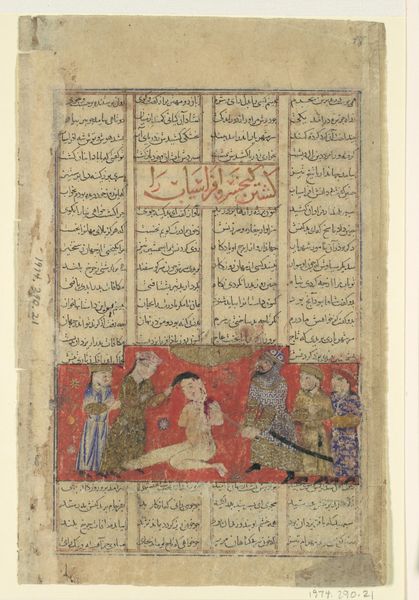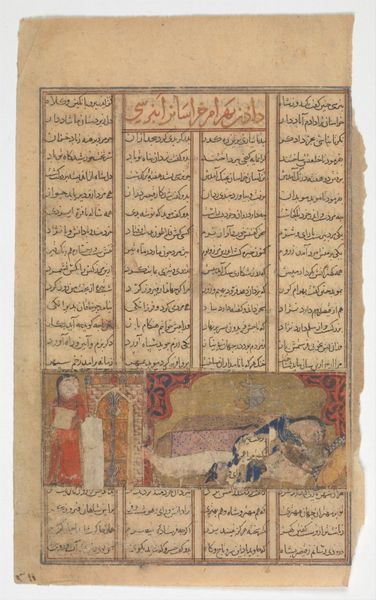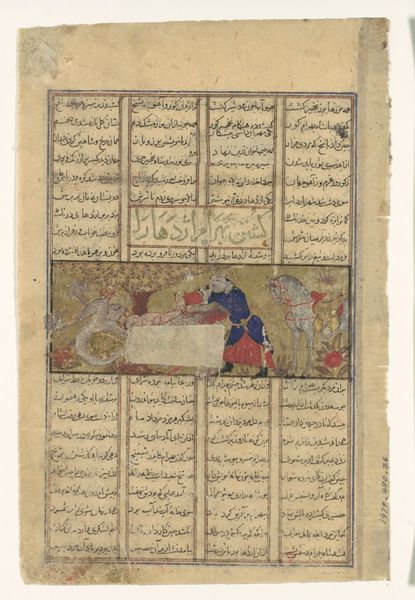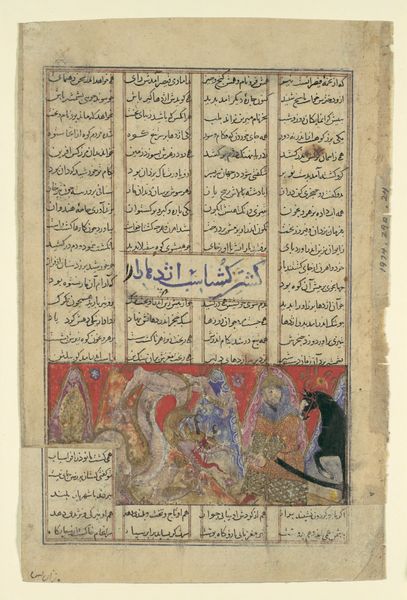
"Isfandiyar's Fourth Course: He Slays a Sorceress", Folio from a Shahnama (Book of Kings) of Firdausi 1305 - 1365
0:00
0:00
painting, watercolor
#
water colours
#
narrative-art
#
painting
#
landscape
#
figuration
#
watercolor
#
islamic-art
#
miniature
Dimensions: Page: H. 7 7/8 in. (20 cm) W. 5 3/8 in. (13.6 cm) Painting: H. 1 13/16 in. (4.6 cm) W. 4 1/4 in. (10.8 cm) Mat: H. 19 1/4 in. (48.9 cm) W. 14 1/4 in. (36.2 cm)
Copyright: Public Domain
Curator: Take a moment to consider this vibrant folio from a Shahnama, or Book of Kings, specifically illustrating "Isfandiyar's Fourth Course: He Slays a Sorceress." We believe it was created sometime between 1305 and 1365. Editor: It's...strangely charming! The figures are so deliberately positioned. And is that supposed to be a landscape behind them? Very stylized, almost theatrical, like a stage backdrop. It makes me think of Persian miniature art and its unique way of flattening perspective and emphasizing pattern. Curator: Absolutely! The meticulous detail, the saturated colors, and the rhythmic repetition of forms are hallmarks of Islamic painting from this period. The narrative itself, taken from Firdausi's epic poem, reflects themes of heroism, morality, and the eternal struggle between good and evil. Isfandiyar, a legendary Iranian hero, is shown here confronting and defeating a sorceress, a testament to his bravery and divine favor. Editor: The juxtaposition of Isfandiyar, serenading the sorceress, next to the horse looks so strange, like there’s a whole piece of the story that's simply omitted in its telling, with a kind of violence that doesn't need depicting because the words suffice, leaving the reader with something almost incomplete to fill in, as a participant rather than viewer. Curator: That sense of incompletion is really part of the appeal for me! As an illustration, this piece aims to support a more expansive story that goes far beyond what's merely visible. This leaf acts almost as a script prompt for dramatic, extended dialogue to which only its literary companion could provide the context! The placement of text and image shows an understanding of how we process visual and written language in relation to one another. Editor: Looking closer, the patterns within the textiles, the flora blooming improbably, and the slight but definite gaze on that black horse really demonstrate a world of intent in a compact, framed space! Curator: I think considering the symbolic weight that textiles and adornment carried within courtly life really draws it into focus. It elevates the storytelling in unexpected ways. Editor: Seeing this narrative distilled through such a rich visual vocabulary... it highlights how tales endure, not just through plot, but through cultural echoes and material memory. Curator: A potent reminder of storytelling's enduring power, indeed!
Comments
No comments
Be the first to comment and join the conversation on the ultimate creative platform.


